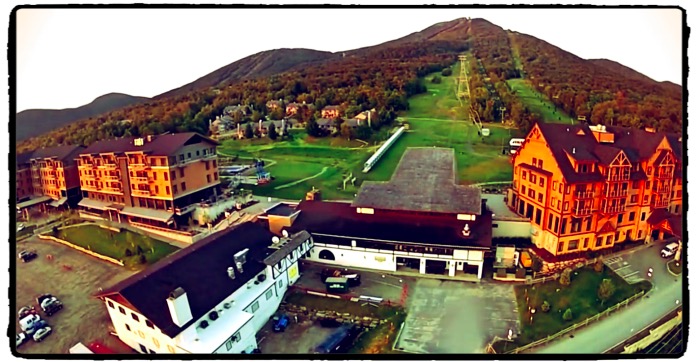NEWPORT — Jay Peak Resort will have to adhere to tougher pollution control measures after signing a settlement agreement between the Vermont Natural Resources Council (VNRC), and the Vermont Agency of Natural Resources, Department of Environmental Conservation.
For more than a decade construction projects at the resort have caused sediment to flow into streams, leading to violations of state water quality standards. Elevated sediment runoff into streams can impact fish habitat, and habitat of other aquatic organisms.
“We have been concerned that for years these streams have failed to meet Vermont’s Water Quality Standards while land development has continued to discharge additional sediment pollution,” said Kim Greenwood, VNRC’s water program director and staff scientist.
In 2004, the Department of Environmental Conservation found that Jay Branch and Tributary 9 of Jay Branch were “impaired” by sediment pollution, meaning the streams failed to meet applicable minimum state water quality standards for aquatic life. According to their finding, the initial impairment of the Jay Branch was attributed to the failure to comply with applicable Vermont construction and erosion control permits and operational stormwater permits.
Recently, an additional stream, Tributary 3 of South Mountain Branch, was identified as impaired.
Over the past several years, various “Water Quality Remediation Plans” were approved. Despite the implementation of the remediation plans, the streams remain impaired.
In 2014, VNRC, represented by the Environmental and Natural Resources Law Clinic of Vermont Law School, appealed the recent stormwater discharge permits issued to Jay Peak. As a result of the appeal, the parties engaged in settlement discussions to craft a clean-up plan that requires additional measures to provide for attainment of Vermont’s Water Quality Standards within a specified timeframe.
“An innovative part of the plan requires Jay Peak to offset sediment discharges so there is no net increase of sediment into impaired streams,” said Jamey Fidel, General Counsel for VNRC.
The agreement has several provisions, including:
• Jay Peak will follow an aggressive compliance schedule for stream restoration.
• Until all streams are in attainment with water quality standards, permits for new discharges will require no net increase of sediment loading. This will be accomplished through the design of additional remedial (“offset”) projects.
• If Jay Peak does not meet the schedule for cleaning up the streams, Jay Peak will not begin new construction until the streams recover.
• If streams show excessive amounts of sediment after having met water quality standards, Jay Peak will not begin new construction until the streams recover.
• All impaired waters at Jay Peak will be in attainment with water quality standards before beginning construction on the West Bowl (a currently undeveloped area adjacent to the resort).
• Before Jay Peak will apply for any Department of Environmental Conservation permits for development in the West Bowl, Jay Peak will submit a Water Quality Protection Plan that includes detailed scientific information to demonstrate whether the waters will be negatively impacted by new development.
• The Department and Jay Peak Resort will host a meeting once a year to update the public on the progress of restoring the streams.




